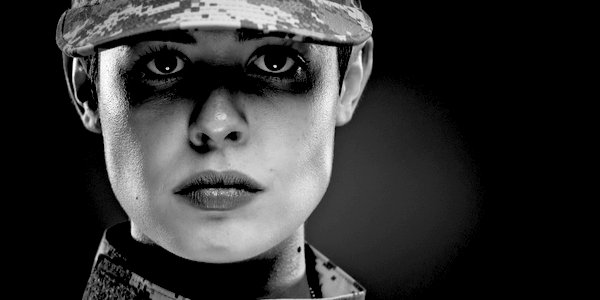THE head of the British Army, General Sir Patrick Sanders, opined last week that wars are won by citizen armies after the professional ones have fought themselves to death. In the General’s opinion, the UK needs a citizens’ army of 50,000 to be able to fight the Russians and their hundreds of thousands. The current British Army, by implication, is not fit to do so – but that wasn’t in the MoD’s press release!
I approached the MoD twice for a copy of the General’s speech, but I’m told they are not sending it out. Presumably General Sanders is an un-person and Grant Shapps is preparing Room 101. No doubt the Prime Minister is seething at having to confirm that there are no plans to introduce conscription.
Why do we spend £53billion a year for professional armed forces if they (a) can’t deter a war and (b) win it if it happens? The truth is that the depletedBritish Armed forces can’t do much at all, despite all their shiny expensive kit and glut of Admirals, Generals and Air Marshals. The Chief of the General Staff has confirmed this assessment. So what might these citizen soldiers look like and where would they come from?
If we had a reserve force of ‘citizen soldiers’, ready in formed units to join the fight alongside the regular army, they would still need to be equipped, trained and organised along similar lines – as was the case during the Cold War. TheTerritorial Army Volunteer Reserve (TAVR) worked. However, there were always some roles that the TAVR could not fill; specifically tanks and mechanised infantry, simply because the organisation skill levels required were beyond could be achieved in the TAVR training regime (one night a week, one weekend a month and two weeks in the summer). It’s the tanks that win wars in Europe, as President Zelensky has been telling us since the invasion.
The TAVR was also used to augment the falling strength of the armed forces in Iraq and Afghanistan. The territorial soldiers integrated completely in the pre-deployment training. Once the six-month tour was over they returned to civilian life, invariably without suitable support and sometimes with tragic consequences. Processes have improved although regular Army recruitment levels haven’t.
The current Army Reserve (as it’s now known), however, is more configured to regular forces augmentation than supplying formed units. This doesn’t really sound like a citizen soldier to me. It’s also a bit on the small side for what CGS has in mind, given a current strength of just 27,500.
The UK had to build citizen armies (and air forces and navies) over both the world wars, not least because the regular Army had been severely decimated fighting in France and Belgium. In each case, it took about three years to get the citizen army into positions capable of winning wars. In both cases it duly did, with considerable help from its allies. The delay is because the mechanics of warfare are difficult to master and making weaponry takes time. A massively expanded army also needs many more commanders, staff officers and sergeant-majors. Some were promoted from the survivor regular Army and others called out of retirement. Most of them had to be developed within the citizen army itself. With the dearth of military experience and the huge time lags in making tanks, this approach won’t work today.
Perhaps General Sanders had in mind the Swedish Cold War model. In the late 1980s it had a strength of some 180,000 (larger than the British Army, despite having a population of around 8million against the UK’s 55million). It was a combination of professional regulars and conscripts, all of whom then did a period in the reserves. Upon mobilisation most regulars were to be promoted in rank, so a company commander would command a battalion. The reservists arrived to fill out the junior ranks (in which they had been trained during their conscript service). The equipment was already purchased, deployed and serviced.
It was a system that worked well, cost about 3 per cent of GDP and gave Sweden very powerful armed forces. Finland and Switzerland operated similar systems; neutrality doesn’t come cheap (unless you’re Irish and able to shelter on the UK’s coat-tails through helpful geography). Most importantly thismodel can’t really work without conscription, which today appears to be politically unacceptable. Enthusiasm for a soldier’s life is at an all-time low, as the dire recruiting figures show.
The nation can’t have it both ways. If it wants to be able to contain Putin or any other potential aggressor it needs to face the facts, both of making defence a higher priority and of our manpower weakness. The General’s point was that if Putin attacked, the British Army would be destroyed. At best it might have fought him to a standstill, as the Ukrainians did. Evicting Russian tanks from Nato’s lawn would be the citizens’ problem, as the regular Army would no longer exist.
The armed forces have been run down for decades. General Sanders is the first serving head of the Army to state publicly that it is not fit for purpose (many have done so from the comfort of retirement and the benches of the House of Lords, but these positions carry no weight and have no effect). While General Sanders need not fear a fall from a fifth-floor window, he won’t be getting a peerage.
The real question is whether this country wants to get serious about defence. If it does, it needs to brace for more spending on defence, which means less spending in other areas. It also needs to employ a serious Secretary of State. We know that’s not Grant Shapps. I don’t think it’s Labour shadow John Healey either.
If we don’t find a government that can sort out defence, we’re reliant upon the citizen soldiers.
Where are they? Look in the mirror.

